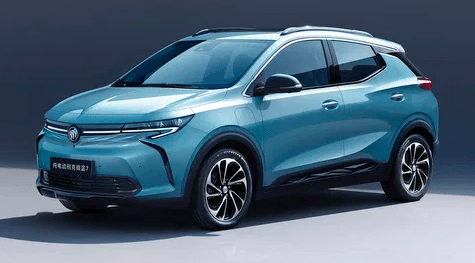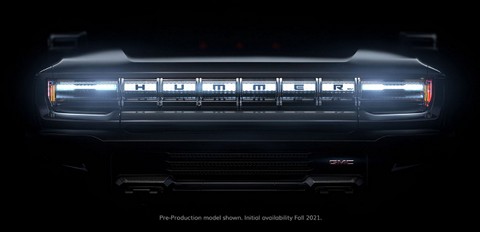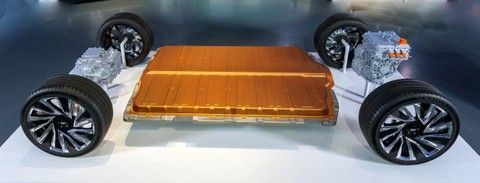This article was originally published by Michael Coates on Clean Fleet Report, a publication that gives its readers the information they need to move to cars and trucks with best fuel economy, including electric cars, fuel cells, plug-in hybrids, hybrids and advanced diesel and gasoline engines.
Often news comes not from corporate press releases, but secondary material. Such is the case with General Motors electric vehicle product plan, which has dribbled out in individual announcements and teasers, but was finally drawn together in the company’s 2019 Sustainability Report that was released this month.
The document lays out a 12-EV strategy that would take GM from a one trick pony with its Chevrolet Bolt EV to a broad lineup of vehicles unmatched by any other in the American market. There are rumors of additional models beyond the 12 announced ones, which is logical given the flexible nature of the EV platform GM has developed.

Each of GM’s four brands would have a piece of the EV plan, but the most significant and broadest product lineup will be allocated to Cadillac as it assumes the role of GM’s leader in EVs.
The timing of the introduction of the new EV is spread over the next three models years will the bulk of them coming in the 2023-24 model years. Not surprising, they also are heavy on SUV/crossover models, tapping into the most popular segments in the current market.
Cadillac’s five-prong approach
Cadillac has been designated by GM as its lead electric vehicle division, possibly indicating a reluctant acknowledgement of the Tesla strategy that started with a premium sedan as its lead volume product after seeding the market with a low-volume sports car.

Cadillac will start its EVolution with the introduction of the 2022 Lyriq. The midsize crossover has been treasured in multiple images during the past several months. Its official launch was pushed back by the pandemic but now is scheduled for August 6. It also sets the nomenclature pattern for upcoming Cadillac EVs, using “iq.” In addition, it will be one of the first products to use the new GM Ultium batteries.
The following year (2023) Cadillac will get a flagship product, which they describe as a “high-performance, ultra-luxury sedan,” the Celestiq, designed to be virtually hand built in low volumes. An Escalade-size electric SUV also will join the lineup that year. In 2024 two more crossover/SUVs will join Cadillac’s EV lineup—probably a compact crossover similar in size to the XT4 and an extra-large, three-row (Escalade ESV-size) SUV. All of the Cadillac EVs are expected to be built in Michigan, most in the Detroit-Hamtramck plant that has been dedicated to electric vehicle production.
Chevrolet expands the bolt brand
Next year, GM’s volume division will freshen the 2022 Chevrolet Bolt EV and add a new crossover Bolt model based on the same architecture. Expect more tech features in what GM envisions as its volume EV models. Both of these models are expected to be on the market in 2021, delayed by the pandemic.
Other EVs for the Chevy brand include a rumored electric van during 2022 (which could be joined by a GMC-branded twin), an announced electric version of the Silverado pickup in 2023 (potentially with a new name) with 400-plug mile range and three crossover/SUV models in the 2024 model year—a compact crossover, large (Suburban-size) SUV and a midsize SUV.

There is also a rumor that a hybrid or plug-in hybrid version of the Corvette could appear in 2022.
The return of the Hummer/Buick SUVs
Already teased extensively, the Hummer will return as an electric sub-brand of GMC. A pickup is due in 2022 followed by an SUV based on the same chassis the following year. Bragging rights will be based on “1,000 horsepower, 11,500 pound-feet of torque and 0-to-60 acceleration in three seconds.”

Buick Division will offer two EVs in the 2023 model year—a midsize crossover about the size of the Envision and a large SUV. Those models may be previewed by some of the electric Buicks being introduced in China, the brand’s largest market. The brand may follow those two with a small electric SUV sourced out of China.
GM has made it clear that its gasoline and diesel-powered models (mostly crossovers and SUVs) will be the source of funds to build the not-yet-profitable electric vehicles that the company sees as its long-term future. That will extend the transition to electric models and probably blunt GM’s marketing of any of its divisions or vehicles as EV leaders.

Even though it has provided examples of product delays as a result of the pandemic, GM claims its EV strategy has not been delayed significantly and the commitment to it, as evidenced by the 12-vehicle lineup in the Sustainability Report, remains strong.
The key is GM does not exist in a vacuum. Ford have several strong EV models due soon, led by the Mustang Mach-E crossover. European luxury and mainstream brands promise a cavalcade of new product, so it will be a competitive market for this lineup. The EV market is rapidly evolving in technology and broadening its appeal, so the next few years should be an exciting time for new models. We promise to be on top of every one as they appear.


Get the TNW newsletter
Get the most important tech news in your inbox each week.






